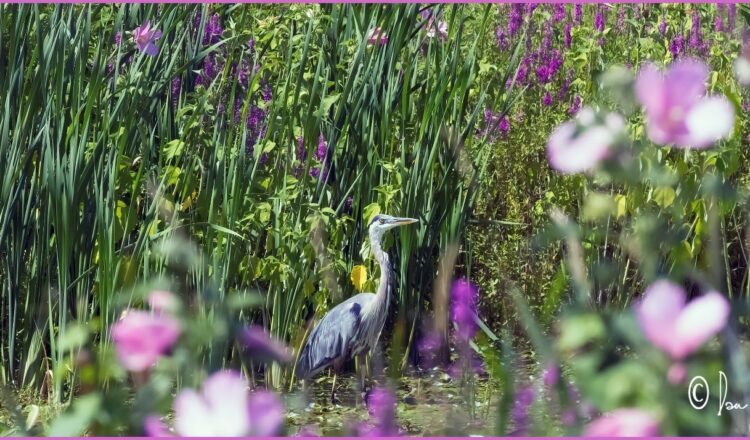Over 10,000 acres located near Seneca Falls, NY
By Dan Jordan, Jordan Photography and Consulting
I first visited MNWR in August of 2016. The above photo may have been my first ever photograph taken at the Refuge. Despite its 2.5 hour drive from my home in Allegany, NY, MNWR quickly became my favorite destination for wildlife photography. The seasonal diversity of the birds which call the refuge their temporary home is incredible. The resident bald eagles and northern harrier, of course interest me. The colors of the flora in each section of the refuge wow me.
MNWR is located near US 20, Seneca Falls, NY. It encompasses over 10,000 acres of the Montezuma swamp and adjacent lands at the north end of Cayuga Lake. MNWR is operated by the U.S. Fish and Wildlife Service. The refuge incorporates lots of water features, including large pools, channels, swamps, and the Seneca River. Given the size of the refuge, it also incorporates grasslands, shrublands and forests, making it an ideal habitat for wildlife and an important stopover point for migratory birds.
MNWR’s strategic location lies in the middle of one of the most active flight lanes in the Atlantic Flyway, a key migratory path for many species. In the spring and fall, millions of migratory birds stop at MNWR.
MNWR was established in 1938. The swamps and marshes in that locality had been drained in the early 1900’s during dam and canal construction. When the water was gone, so was the wildlife. MNWR has been key in the reestablishment of those wetlands and as the water returned, so did the wildlife.
My experiences at MNWR have varied with the seasons. In the spring and fall, bird populations explode as the migrations take place. During the summer months, I see the resident populations, such as great blue herons, ospreys, and of course bald eagles. MNWR boasts six active bald eagle nests. Spotters have counted as many as 60 bald eagles within the refuge at times.
Perhaps overlooked are the varied flora varieties at MNWR. Depending on the season, the varieties will impress. If you time your visit right, the blooms and color will overwhelm you. The photo atop this article was taken in August, not the prime month for blooms, and yet color abounds.
The main section of MNWR, at the Route 20 entrance, has a wildlife drive which circles through the refuge. It’s 3.5-mile dirt road has a speed limit of 10 MPH, however, you will find yourself stopping more than driving. Views of the Seneca River, large pools, and marshes teem with birds and other wildlife. Each time I travel the drive, upon completion of the loop, I immediately do another loop and usually see a whole new set of species on the second time around. The main pool, which is a 1600-acre wetland, is on the left (driver side) for the entire 3.5 miles. Just about every car you see on Wildlife Drive has one or more cameras pointed out their windows. Photo ops are numerous and frequent.
Following are photos I have captured at MNWR over the years along with brief stories about each.
The first is of a species I have only ever seen once. It was quite an accidental sighting at MNWR. I had stopped at an observation point (near the huge bald eagle statue one can see from the Thruway) for a quick snack, when I looked down and saw this American bittern. It is a member of the heron family which eats frogs, snakes, and fish. MNWR is the perfect habitat for this rarely seen species. Photo from 2020.
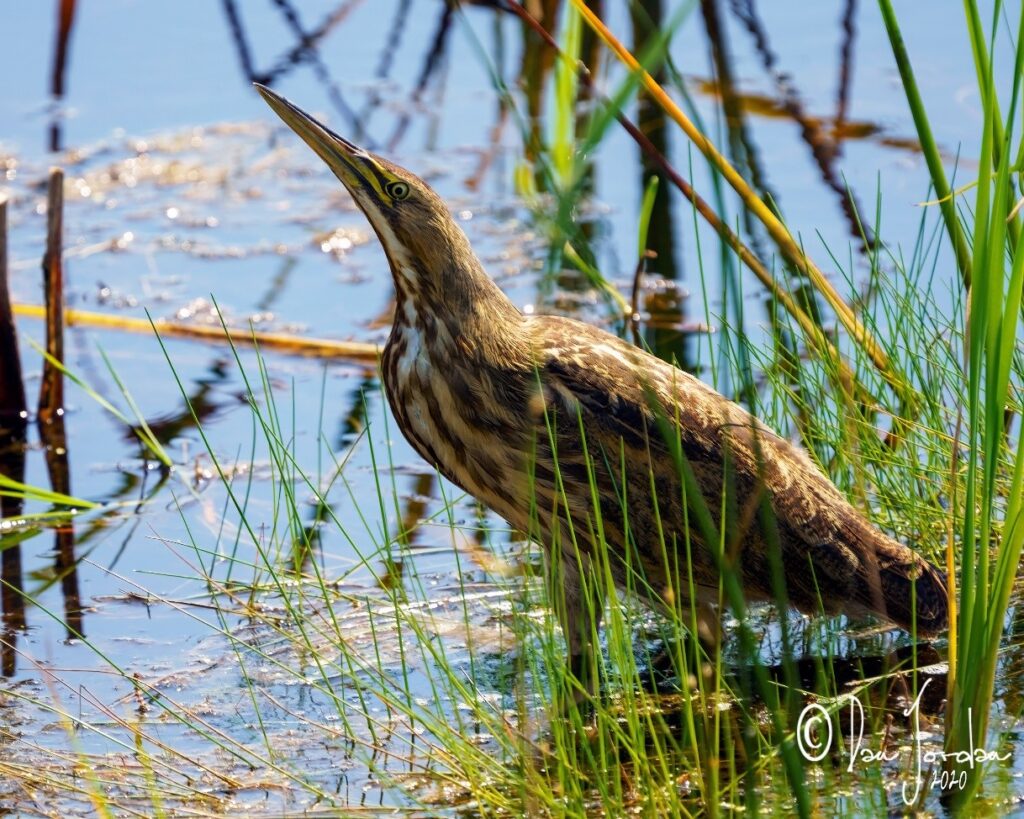
The next photo is of a great white egret, which I see often at the refuge. This photo taken in August of 2021 is of an egret passing me along wildlife drive.
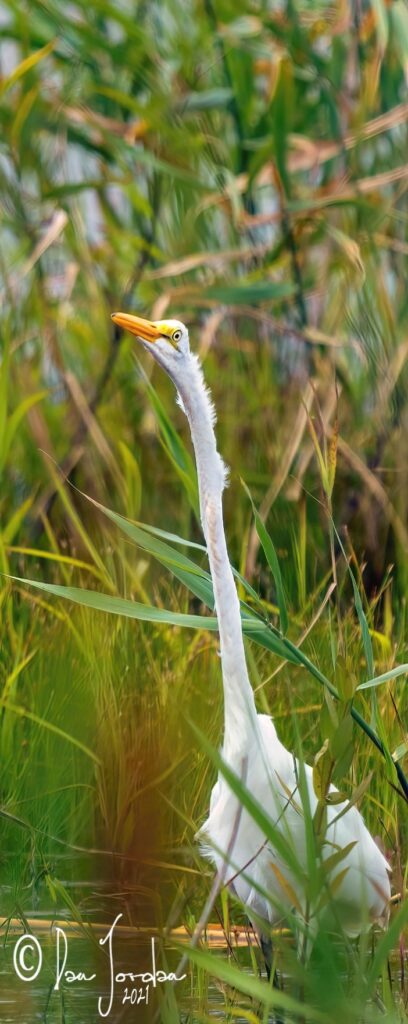
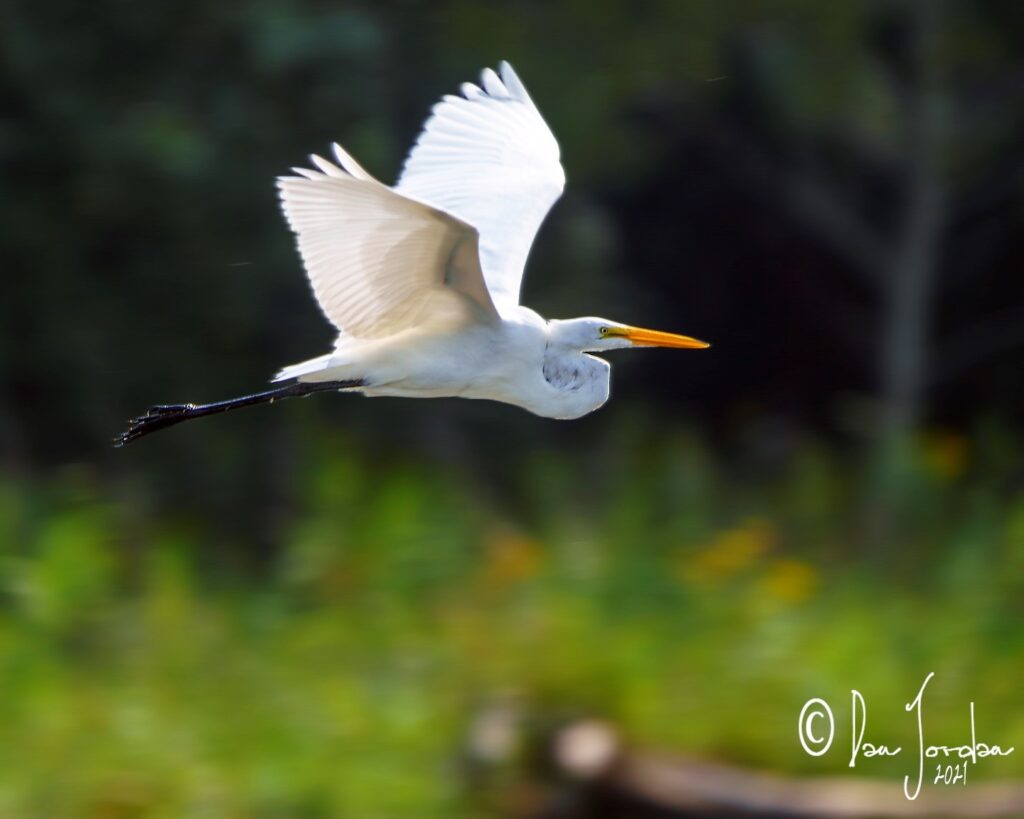
This next egret photo taken in July of 2021 is one of my favorites. It shows a great white egret doing, well, doing what egrets do, apparently. It also demonstrates the length of their necks. If you could see the size of some of the fish that egrets eat, you’d wonder how on earth they can swallow them with those long skinny necks.
Another species that I have only seen at MNWR is the black crowned night heron. This image, taken in August of 2021, shows this heron with the background of the Seneca River, backlit by the morning sun. Those are some BIG feet!
While on the theme of herons, this next image shows a green heron taking flight in a small pool at the May’s Point portion of the refuge in July of 2021.
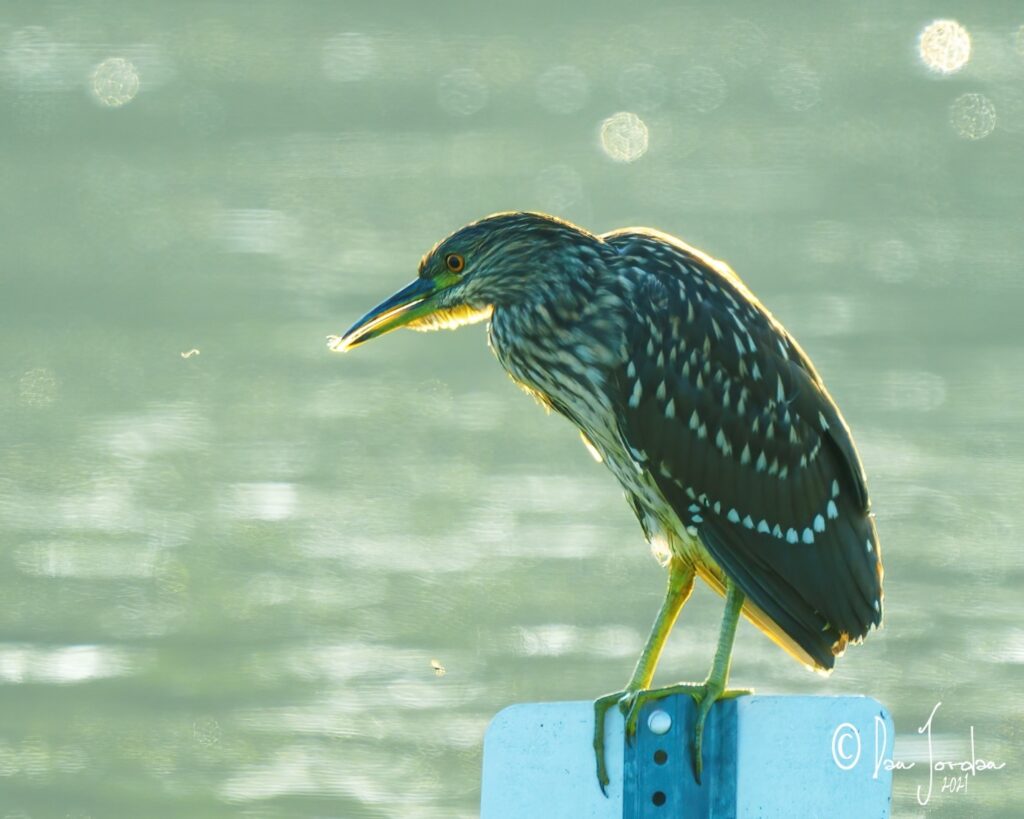
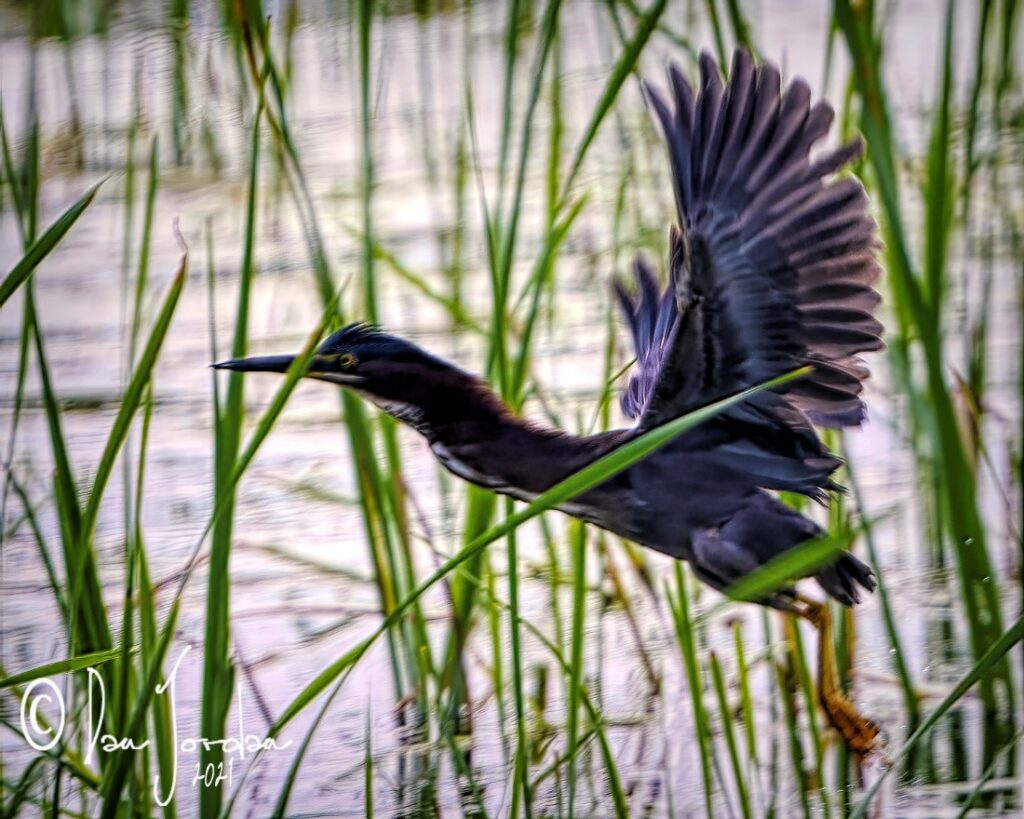
And, one last heron photo is of this great blue heron standing on the same sign the night heron was on in front of the Seneca River. It had chased off the black crowned night heron to take its place on the sign.
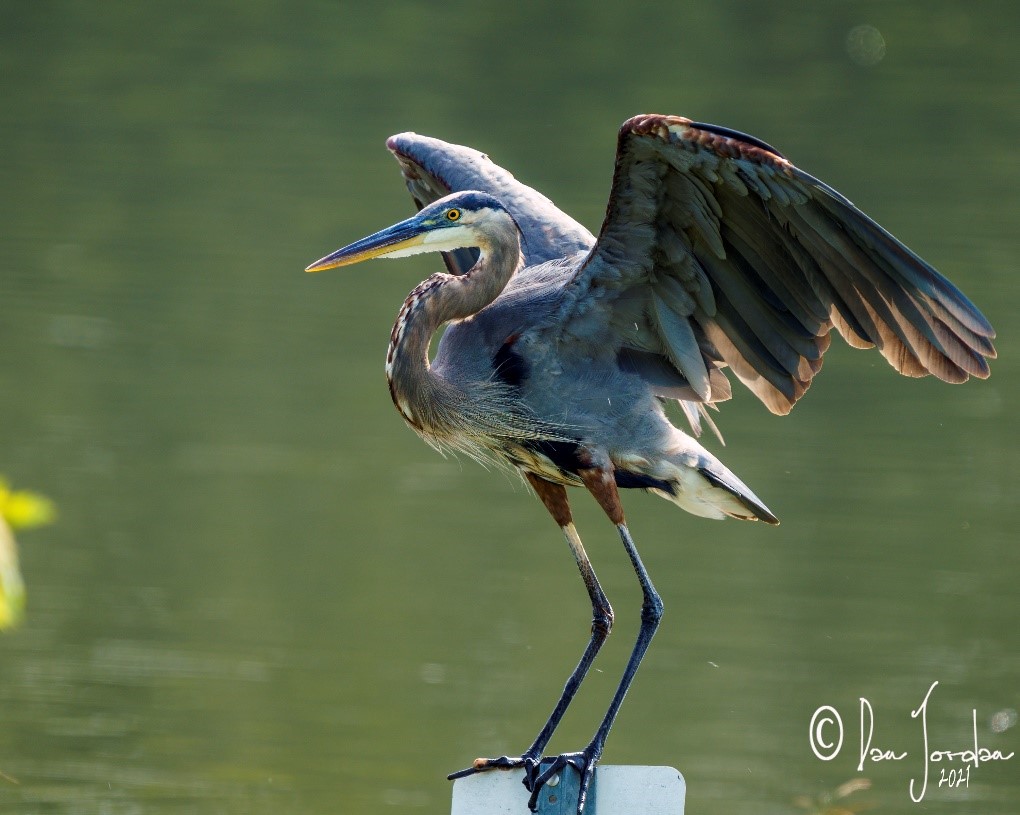
MNWR is home to countless ospreys. This photo shows a nest box, near May’s Point, which has been adorned with ornamental shrubbery (LOL). This is a juvenile osprey awaiting its next meal. Juvenile ospreys are easy to identify by their red eyes. At approximately age 2, those eyes will turn yellow/gold, a characteristic of adult ospreys
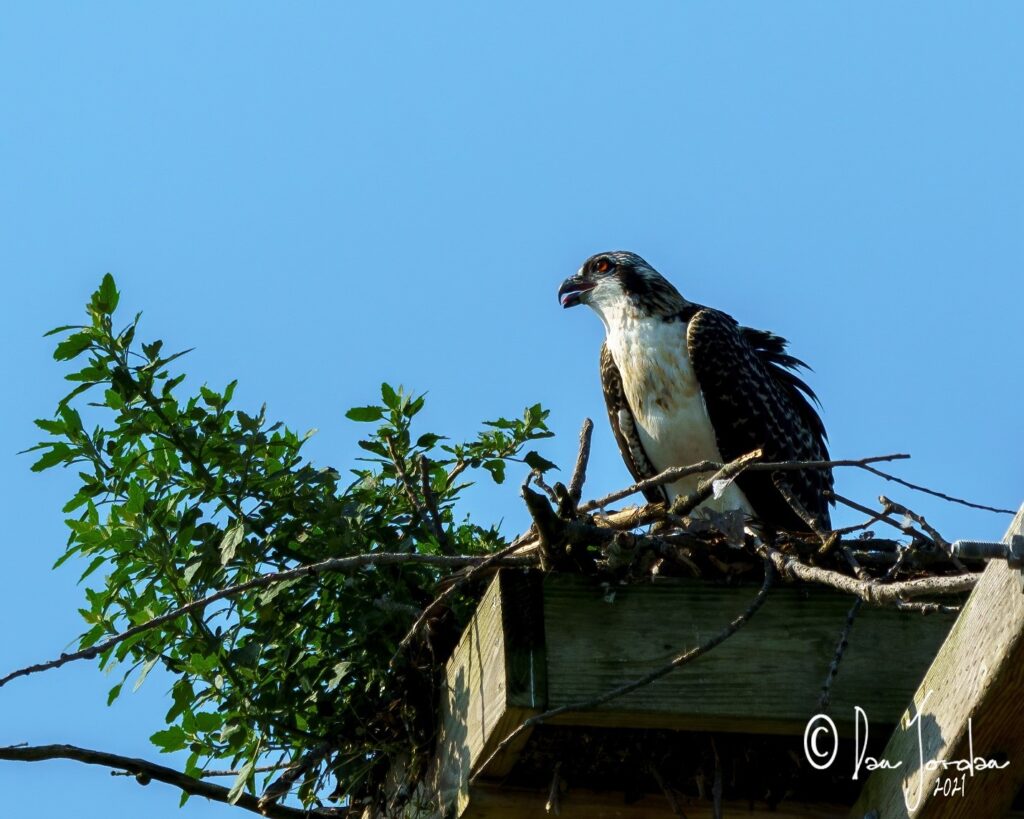
I would be remiss, of course, if I didn’t share some MNWR bald eagle photos. So many thousands from which to choose. I’ll not story tell, just let you enjoy a few of my eagle encounters at MNWR!
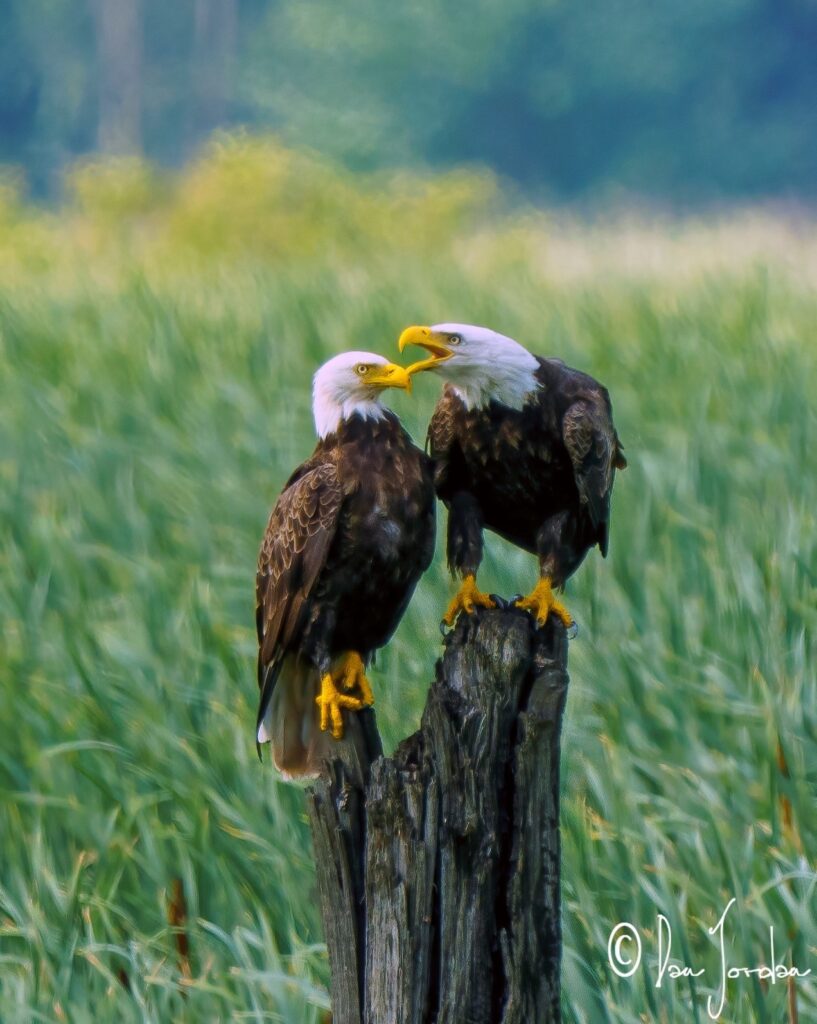
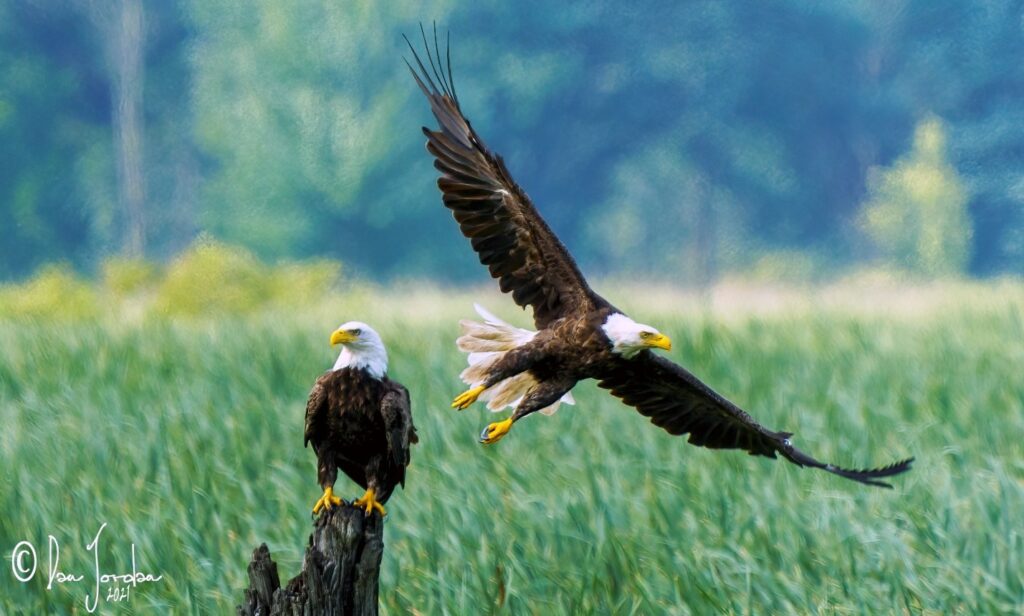
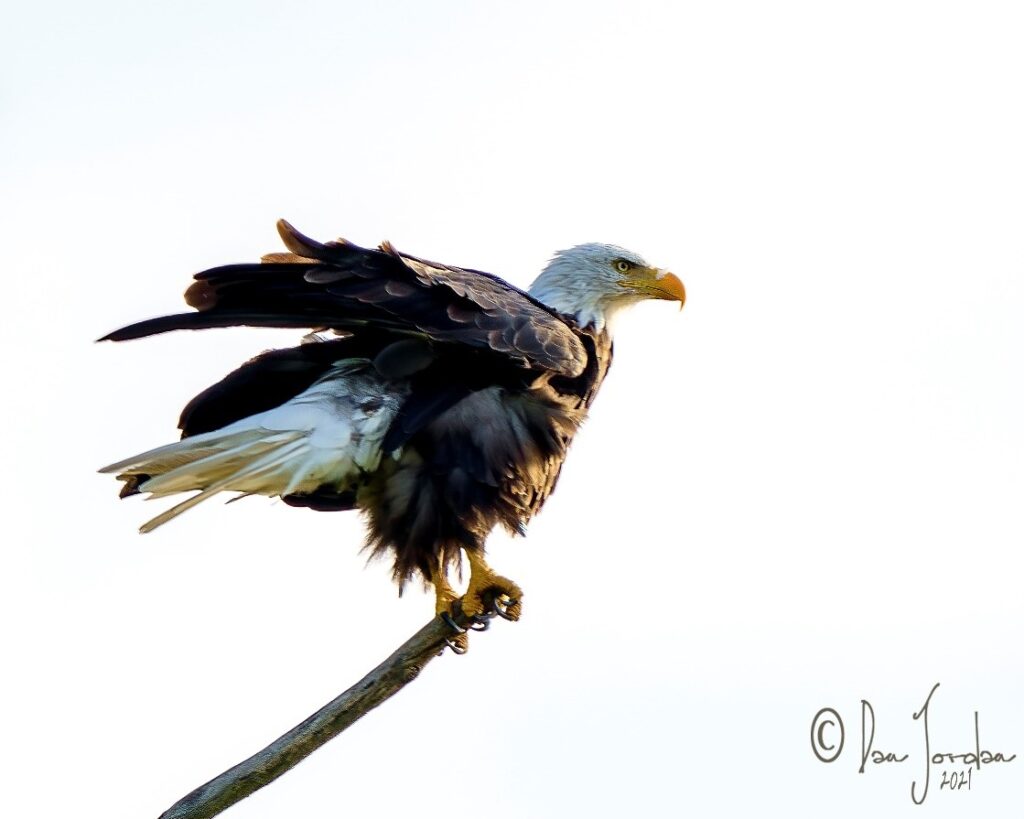
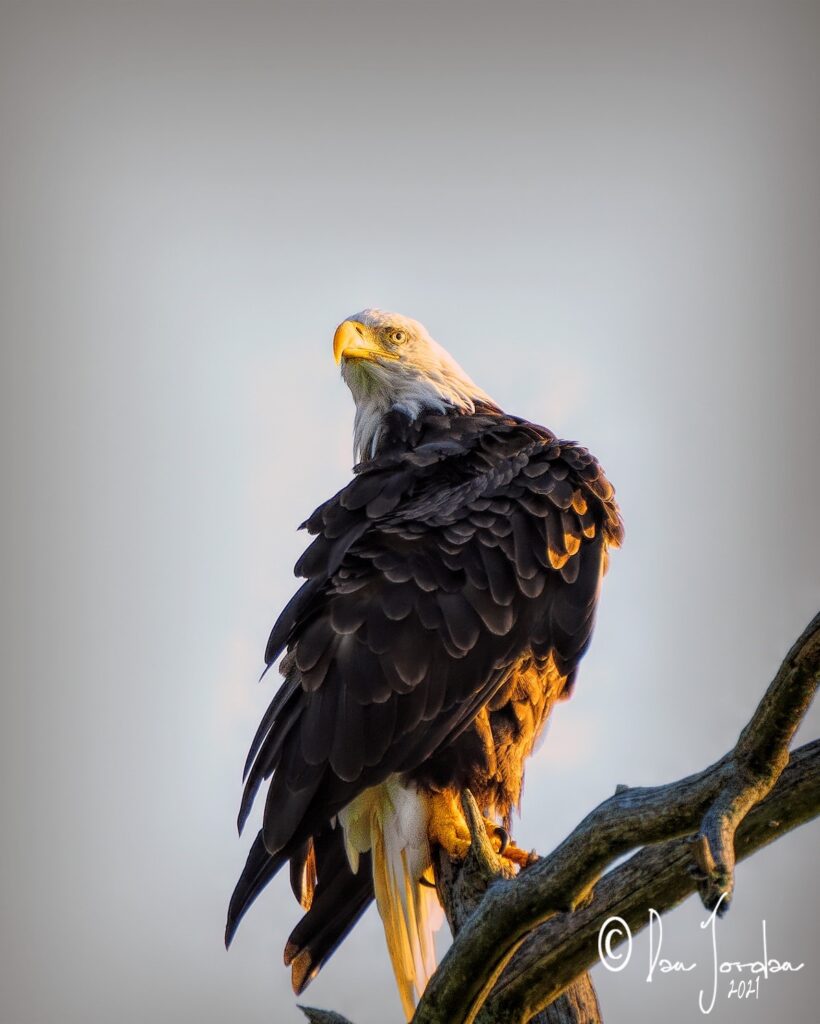
By the way, there is a tree along Wildlife Drive, we photogs have named the “Eagle Tree”, where most times, there will be an eagle or multiple eagles perched. The last two photos are of eagles in that tree. The last photo was at sunrise. I leave early when I go to MNWR so I can be there at first light. From the Eagle Tree, the eagles can watch both the Seneca River and the main pool for possible meals.
Frankly, this article could easily be a book. So many species overlooked in this presentation, but time and space are limited. I suggest you make a visit (or several visits) to MNWR to see for yourself.
So, there you have it, another edition of my Wild World series. I hope this article has inspired you to As I always say, keep your eyes open when out in the wild, you never know what you will see.


